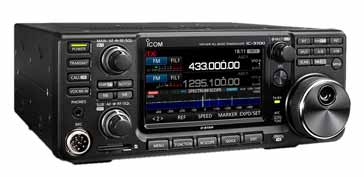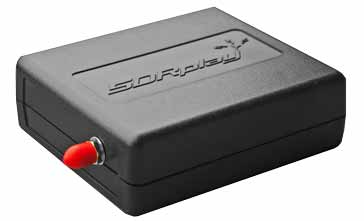How to Buy Best Software Defined Radio, SDR
Top tips and hints on how to buy the best software defined radio receiver - guide for what to look for.
Home » Radio & RF technology » this page
Software Defined Radio Includes:
SDR basics
SDR hardware architecture
How to buy the best SDR
Software defined radios are now widely available in all forms from low cost SDR USB modules that can be plugged into a computer, to the high end amateur radio and professional receiver and transmitter systems that are available.
With the wide variety of software defined radio systems that are available, when looking to buy one the choice can be daunting.
Knowing what to look for - even just knowing what the various SDR offerings are and what to expect for the money can be a little daunting.
Understand what you want
The first step in deciding the best software defined radio to buy is to understand fully what you are looking for. There are several broad categories of software defined radio:
- The top end radio communications equipment that is aimed at professional and top end radio amateur use. Many of these radios tend to be self contained, although they will interface to computers.
- Medium to high end software defined radios that use the display and control capabilities of a computer.
- Entry level software defined radios - these are typically in the form of a USB dongle, etc.
Although this is a very broad classification, it serves to indicate some of the different types of SDR available.
Stand alone, PC compatible , dongle
One of the first decisions to be made is about the type of software defined radio to buy. With a good variety of different approaches to using SDR technology, there is a good variety of different products available.
One of the decisions to be made is the level of SDR equipment required, whether a simple dongle with possibly lower performance, a mid to high range separate unit that requires a PC to drive the SDR unit itself, or whether a receiver (or transmitter) that uses SDR technology but can be operated as a self contained unit.
Often the envisaged use and cost will define what form of SDR equipment required, so this decision will probably fall out of looking at the basic requirements.

SDR frequency coverage
Software defined radios today offer a fantastic level fo frequency coverage. Dependent upon what the application is, the SDR module will probably cover a considerably greater frequency band than is actually needed.
Often they extend up as far as 5 or 6 GHz, and down to very low frequencies. Often the performance falls at either end of the coverage band, but check the coverage is what is required.
For direct conversion to and from the digital domain, the main limiting factor is the performance of the analogue to digital converter in the case of the receiver, or digital to analogue conversion int he case of a transmitter. Advances in this technology has meant that the top frequencies available have risen considerably in recently years.
Note that sometimes an analogue frequency converter may be used.
SDR for transmit & receive
Although the majority of SDR radios are receive only, it is perfectly possible for the same techniques to be used for transmission as well.
Instead of the signal from the antenna passing into a digital to analogue converter, the signal is generated within the signal processing area and passed to a digital to analogue converter.
For most applications only a receiver is required, and most of the units available only have a reception capability. A few may provide for the generation of signals.

Software availability for SDR
There are many different software defined radio software packages. Many of the dongle and general PC based software defined radios use these.
The SDR software runs on the PC and then interfaces with the radio itself. Popular SDR software packages include: Matlab, HDSDR, SDR Touch, Planeplotter, SDR#, etc.
Some SDRs will be compatible some programmes or Apps, some even use their own to gain closer integration and better performance.
When considering to buy a particular software defined radio, it is necessary to check which programmes can be used so that compatibility can be checked.
Also, in addition to the basic SDR software, further packages may be required to supprot the SDR software. Before buying the SDR hardware, check what is needed.
Also remember that there may be an additional cost for these programmes, so the overall cost to buy an SDR can be more than just the hardware. The software cost must be factored in to the purchase.
PC operating systems
Most software defined radio software packages are designed to run on a WIndows PC. SDR software is available for other platforms, but a little care is needed to make sure that everything is available to run on platforms like Linux, Android, iOS, etc.
Before buying and SDR or SDR software, check the compatibility with the operating system being used.
PC hardware needed
In order to run the SDR software package, a certain level of hardware will be required.
Before buying the software defined radio system, check that the intended PC is capable of running the software needed.
Most modern PCs should have the capability, but older machines may not be up to the job, so check before buying.
Basic receiver performance
As an SDR is a radio receiver first and foremost, the basic radio specifications are of particular importance when looking to buy and SDR.
The key specifications of selectivity, sensitivity, and the like are all important.
- Sensitivity: The sensitivity of a radio receiver is essentially its ability to receive weak signals. It is limited by the noise generated within the receiver, although for lower frequencies the externally generated noise is high and therefore having an ultra-low noise and sensitive receiver does not produce a huge benefit.
Note on the Receiver Sensitivity:
The sensitivity of a radio receiver of any form is a key aspect of its performance. There are several methods used to define the sensitivity including signal to noise ratio, SINAD, noise figure and others.
Read more about Receiver Sensitivity.
- Selectivity: The selectivity of a radio receiver is its ability to accept signals on the required frequency and reject those on adjacent frequencies or channels.
Note on the Receiver Adjacent Channel Selectivity:
The adjacent channel selectivity of a receiver is the ability of a set to accept signals on the wanted channel or frequency, and reject any on other adjacent channels or frequencies as these would interfere wit the wanted signal. In a superhet radio, this selectivity is primarily provided by the filters in the intermediate stages.
Read more about Receiver Adjacent Channel Selectivity.
- Dynamic range: One of the key challenges for any radio receiver is to receive weak signals in the presence of nearby strong signals. Sometimes the very strong signals can cause issues associated with overloading and this can prevent the wanted weak signals from being received. Accordingly the dynamic range of a receiver can be every bit as important, if not more so than the actual sensitivity.
- Frequency accuracy: In some instances the frequency accuracy of the software defined radio may be of importance. The frequency accuracy will be defined by the clock used by the SDR. This can be very accurate, or in some instances less so. It is important for instances where the exact receive frequency may need to be known. It depends upon the accuracy of the clock used within the SDR. Often temperature compensated crystal oscillators may be used. Specifications will be given in terms of parts per million for a given temperature rise, ageing rate, etc.
Some SDR receivers may have the capability for the use of an external reference is frequency accuracy is of importance.
Power requirements
Especially for dongle based SDRs, the power requirements will be of importance. It is worth checking the power capability for the USB port that is likely to be used. Most USB based software defined radios will consume comparatively little power, but some may require a reasonable level of power to be provided.
Obviously the self contained radios using software defined radio technology will normally be powered from a mains supply, and these should not present much of a problem.
Cooling requirements
Some of the USB dongle types of SDR may consume a reasonable amount of power and as a result, they may run rather warm. It is worth checking any calling requirements as they may not like being run in an environment that does not have some air movement.
Cooling should not be an issue for the higher cost units, even if they are linked to a computer via a USB link.
Some of the very small dongles can become exceedingly hot, so beware touching these ones when they have been operating.
Software defined radios, SDRs have come a very long way in recent years. With the conversion to and from the digital domain now able to function at very high frequencies, this has totally revolutionised the SDR market and brought these receivers into very common use, and for prices that are very reasonable. This makes them an ideal proposition for many from hobbyists to professional users to buy.
 Written by Ian Poole .
Written by Ian Poole .
Experienced electronics engineer and author.
More Essential Radio Topics:
Radio Signals
Modulation types & techniques
Amplitude modulation
Frequency modulation
OFDM
RF mixing
Phase locked loops
Frequency synthesizers
Passive intermodulation
RF attenuators
RF filters
RF circulator
Radio receiver types
Superhet radio
Receiver selectivity
Receiver sensitivity
Receiver strong signal handling
Receiver dynamic range
Return to Radio topics menu . . .



